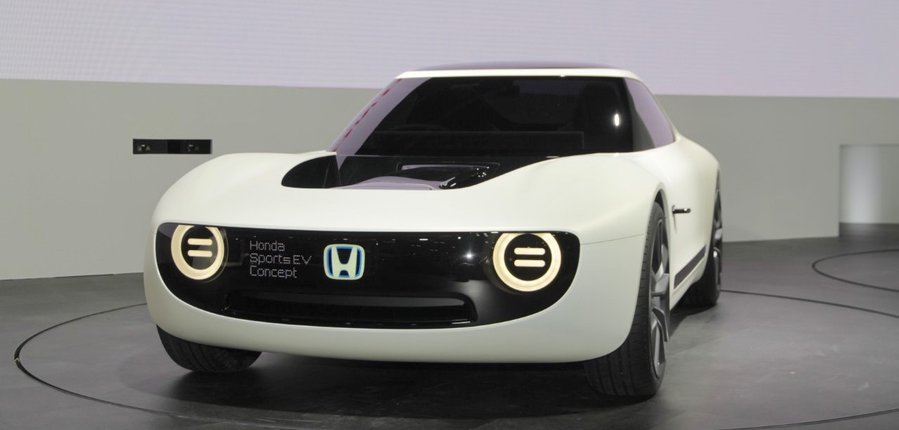Honda design director talks Urban EV and Sports EV concepts

But its two latest concepts point to a bright and markedly different electric future.
The Urban EV – a simply but smartly proportioned small hatchback surely inspired by the classic first-generation Honda Civic and Volkswagen Golf – was revealed at the Frankfurt Motor Show in September. That was quickly followed by the svelte and curvy Sports EV at the Tokyo Motor Show six weeks later, where Autoblog caught up with the design boss.
Honda's executive creative director of automobile design, to give the 50-year-old Makoto Iwaki his full title, isn't a household name or celebrity like his counterparts at the top of other car brands' design departments. Indeed, he rarely gets wheeled out in front of the world's media, and there is a clear humility to his manner. Asked what this clean and elegant new direction is about, he's calm but forthright in his reply. "We think the era of battery-electric vehicles is about to start," Iwaki says, "and a new chapter compared to the internal-combustion engine deserves a new look".
The Urban EV is not conceptual flourish, either. It will spawn a production Honda EV built in a similar vein on a newly developed and dedicated EV platform, on sale in Europe starting in 2020 and then in Japan afterward.
Part of both vehicles' charm is their simplicity. There are almost no creases or lines, just great proportions, careful surfacing and full volumes. The exterior details, such as the circular front LED headlamps with double-dash inserts framed by dark lozenge-shaped surrounds, are firmly fun and nonaggressive, harking back to similar grille and light combinations from 1970s classics.
Does Iwaki see the designs as nostalgic, though?
"Honestly, we don't see them as retro," he said. "But they are friendly faces. We don't need to create a totally new thing, because electric vehicles are not new."
The Sports EV doesn't have an interior yet – it was a quicker six-month project compared with the 12 months dedicated to the Urban EV – and very little has been revealed about its underpinnings, other than that it will "combine EV performance and artificial intelligence inside a compact body with the aim to realize the joy of driving with a sense of unity with the car." The concept's grille can also send out messages to other road users via digital word displays to reassure them of its intentions.
By contrast, the Urban EV's smart cabin has been fully realized, featuring simple bench seating front and back, clad in gray wool upholstery and caramel-brown seatbelts, with wood veneer shell backs. Up front, a horizontal wood dashboard with a widescreen infotainment screen apes the look of a sideboard and TV in a modern but minimalist domestic lounge designed for cruise rather than race mode. Does this reflect a more human-centric design approach from Honda?
"We wanted to be closer to our EV customers' lifestyles," he says. But does that mean Honda will be looking for a different kind of customer for its EVs, too?
"Maybe," concludes Iwaki enigmatically, and then with smile, it's time for his next interview.
Nouvelles connexes


